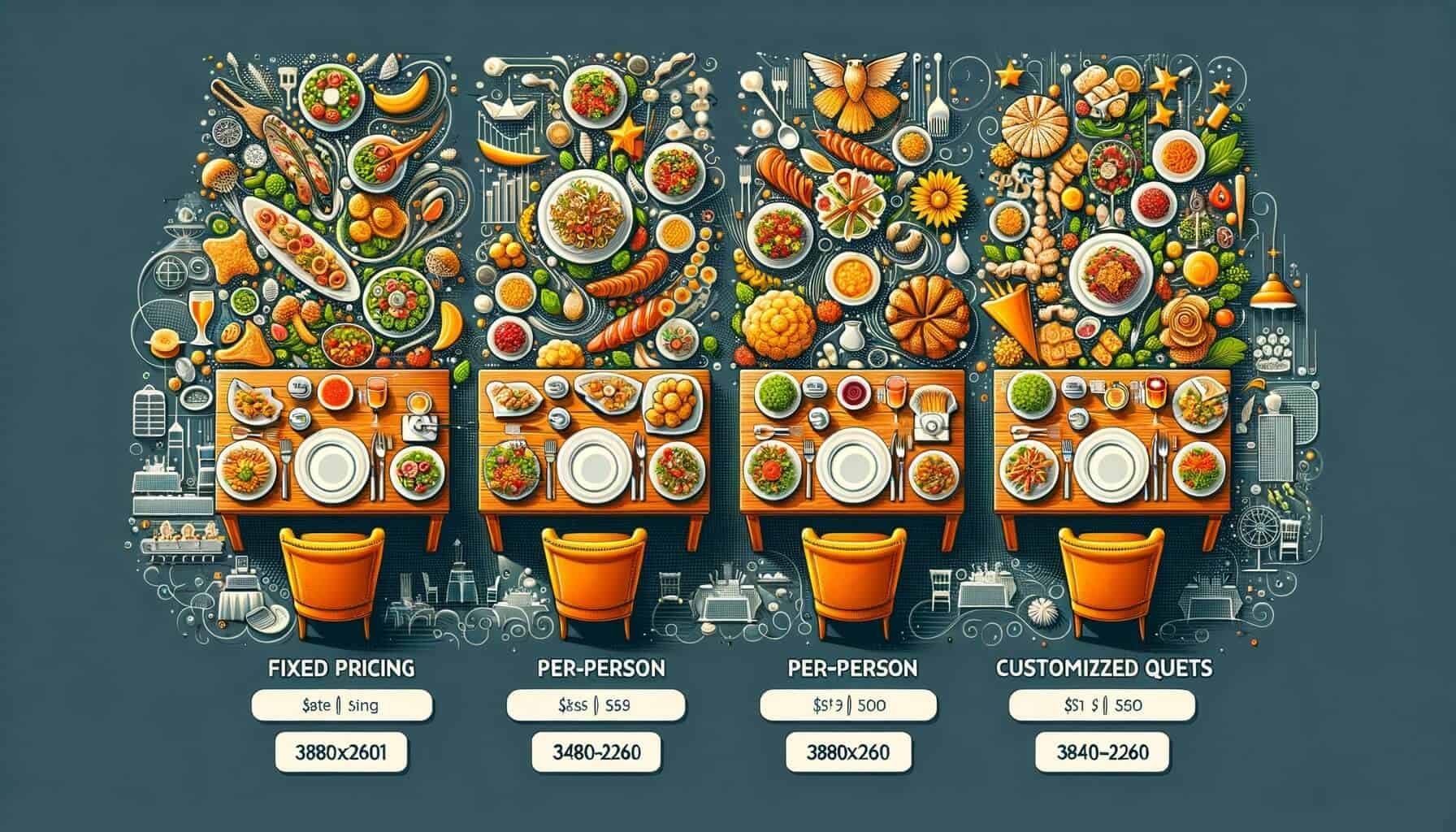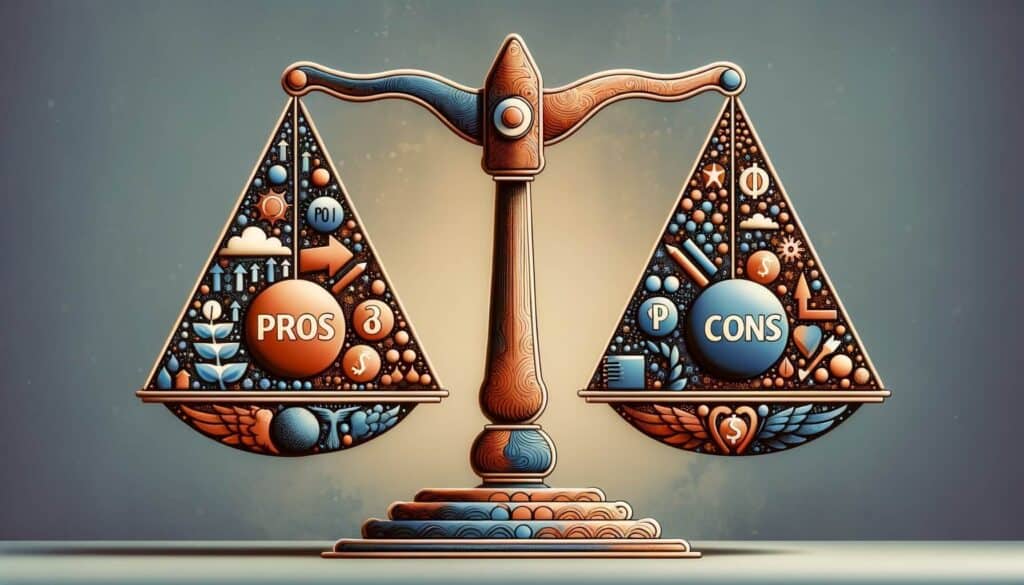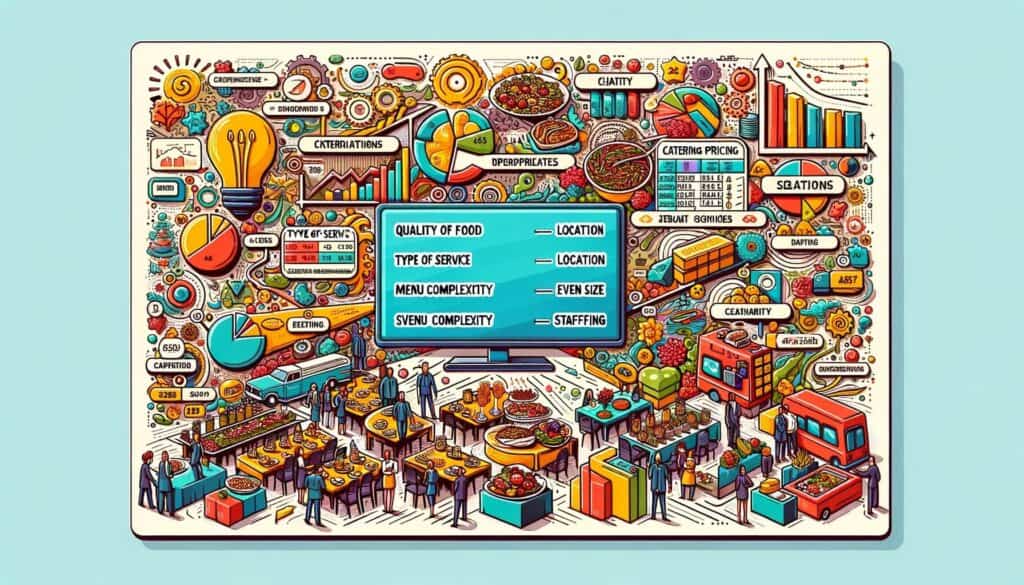
By Jermaine Thomas March 18, 2025
Catering is a thriving industry that plays a crucial role in various events, from weddings and corporate functions to social gatherings and parties. One of the key aspects of running a successful catering business is determining the right pricing model.
Catering pricing models can vary, with three common options being fixed pricing, per-person pricing, and customized quotes. Each model has its own set of advantages and disadvantages, and it is essential for catering businesses to understand these options to make informed decisions about their pricing strategies.
Fixed Pricing Model: Pros and Cons

The fixed pricing model is a straightforward approach where the catering company charges a fixed amount for their services, regardless of the number of guests or specific requirements. This model offers several advantages.
Firstly, it simplifies the pricing process, making it easier for both the caterer and the client to understand and negotiate. Secondly, it provides predictability for the client, as they know exactly how much they will be paying for the catering services. This can be particularly beneficial for budget-conscious clients who want to avoid any surprises.
However, the fixed pricing model also has its drawbacks. One major disadvantage is that it may not accurately reflect the actual costs incurred by the caterer. For instance, if the number of guests is significantly lower than anticipated, the caterer may end up losing money.
On the other hand, if the number of guests exceeds expectations, the caterer may miss out on potential revenue. Additionally, the fixed pricing model may not account for variations in menu choices or special dietary requirements, which can lead to additional costs for the caterer.
Per-Person Pricing Model: Advantages and Disadvantages

The per-person pricing model is a popular choice in the catering industry. Under this model, the caterer charges a specific amount per guest, taking into account factors such as the menu, level of service, and event requirements.
This model offers several advantages. Firstly, it allows for more accurate cost estimation, as the caterer can calculate the expenses based on the number of guests. Secondly, it provides flexibility for the client, as they can adjust the guest count and menu options to fit their budget.
However, the per-person pricing model also has its disadvantages. One potential drawback is that it can be challenging to accurately predict the number of guests, especially for events with uncertain attendance.
This can lead to overestimation or underestimation of costs, potentially affecting the profitability of the catering business. Additionally, the per-person pricing model may not account for variations in menu choices or special dietary requirements, which can result in additional costs for the caterer.
Customized Quotes: Tailoring Pricing to Individual Needs

The customized quotes pricing model is a highly flexible approach that allows the caterer to tailor the pricing to the specific needs of each client. Instead of offering fixed or per-person prices, the caterer provides individualized quotes based on factors such as the menu, event requirements, location, and level of service.
This model offers several advantages. Firstly, it allows for maximum customization, ensuring that the client receives exactly what they want within their budget. Secondly, it enables the caterer to accurately account for variations in menu choices, dietary restrictions, and other specific requirements.
However, the customized quotes pricing model also has its challenges. One potential drawback is that it requires more time and effort from the caterer to prepare and negotiate individualized quotes for each client.
This can be particularly demanding for catering businesses with a high volume of inquiries and bookings. Additionally, the customized quotes model may lead to more complex pricing structures, making it harder for clients to compare different catering options and make informed decisions.
Factors Influencing Catering Pricing Models

Several factors influence the choice of catering pricing models. Firstly, the type of event plays a significant role. For large-scale events with a fixed guest count, such as weddings or conferences, the per-person pricing model may be more suitable. On the other hand, for smaller events with varying guest counts, such as private parties or corporate luncheons, the fixed pricing model or customized quotes may be more appropriate.
Secondly, the menu and level of service can also impact the pricing model. If the menu options are limited and the level of service is consistent across all events, the fixed pricing model may be a viable option. However, if the menu choices are extensive and the level of service varies based on client preferences, the per-person pricing model or customized quotes may be more suitable.
Thirdly, the target market and competition in the catering industry can influence the choice of pricing model. In a highly competitive market, catering businesses may opt for the per-person pricing model to attract clients with transparent and competitive pricing. On the other hand, in a niche market where customization and personalized service are valued, the customized quotes pricing model may be more appealing.
How to Determine the Right Pricing Model for Your Catering Business
Determining the right pricing model for a catering business requires careful consideration of various factors. Here is a step-by-step guide to help catering businesses make informed decisions:
Step 1: Analyze the target market and competition. Research the local market to understand the pricing strategies of competitors and the preferences of potential clients. This will provide insights into the pricing models that are most effective in attracting and retaining customers.
Step 2: Evaluate the type of events catered. Consider the typical size and nature of events catered by the business. Determine whether the guest count is fixed or variable, and whether the menu choices and level of service vary significantly.
Step 3: Assess the menu options and level of service. Analyze the complexity and variety of menu options offered by the catering business. Consider whether the level of service is consistent across all events or tailored to individual client preferences.
Step 4: Calculate the costs and profit margins. Determine the fixed and variable costs associated with catering services, including ingredients, labor, equipment, and overhead expenses. Calculate the profit margins required to sustain the business and achieve growth.
Step 5: Consider the client’s perspective. Put yourself in the shoes of potential clients and consider their preferences and expectations. Think about the factors that are most important to them, such as budget, menu choices, and level of customization.
Step 6: Test different pricing models. Experiment with different pricing models on a small scale to gauge client response and profitability. Monitor the results and gather feedback from clients to refine the pricing strategy.
Step-by-Step Guide to Implementing a Fixed Pricing Model
Implementing a fixed pricing model requires careful planning and execution. Here is a step-by-step guide to help catering businesses implement this pricing model effectively:
Step 1: Determine the fixed price. Calculate the average costs associated with catering services, including ingredients, labor, equipment, and overhead expenses. Add a reasonable profit margin to arrive at the fixed price.
Step 2: Define the scope of services included. Clearly outline the services included in the fixed price, such as menu options, level of service, and equipment provided. Specify any limitations or exclusions to avoid misunderstandings with clients.
Step 3: Communicate the pricing model to clients. Clearly communicate the fixed pricing model to potential clients through marketing materials, website content, and direct communication. Highlight the benefits of this model, such as simplicity and predictability.
Step 4: Provide transparency in pricing. Break down the fixed price into its components, such as food costs, labor costs, and overhead expenses. This will help clients understand the value they are receiving and build trust in the catering business.
Step 5: Monitor costs and adjust pricing if necessary. Regularly review the costs associated with catering services and adjust the fixed price if significant changes occur. This will ensure that the pricing remains fair and profitable for the catering business.
Step-by-Step Guide to Implementing a Per-Person Pricing Model
Implementing a per-person pricing model requires careful calculation and flexibility. Here is a step-by-step guide to help catering businesses implement this pricing model effectively:
Step 1: Determine the per-person price. Calculate the average costs associated with catering services, including ingredients, labor, equipment, and overhead expenses. Divide the total costs by the expected number of guests to arrive at the per-person price.
Step 2: Define the scope of services included. Clearly outline the services included in the per-person price, such as menu options, level of service, and equipment provided. Specify any limitations or exclusions to avoid misunderstandings with clients.
Step 3: Communicate the pricing model to clients. Clearly communicate the per-person pricing model to potential clients through marketing materials, website content, and direct communication. Highlight the benefits of this model, such as flexibility and customization.
Step 4: Provide transparency in pricing. Break down the per-person price into its components, such as food costs, labor costs, and overhead expenses. This will help clients understand the value they are receiving and build trust in the catering business.
Step 5: Adjust pricing based on guest count. Offer tiered pricing options based on different guest counts to accommodate varying event sizes. This will allow clients to choose the most suitable pricing option for their specific needs.
Step-by-Step Guide to Implementing Customized Quotes
Implementing customized quotes requires a personalized approach and effective communication. Here is a step-by-step guide to help catering businesses implement this pricing model effectively:
Step 1: Gather client information. Collect detailed information from clients about their event requirements, including the guest count, menu preferences, dietary restrictions, and level of service desired. This will provide the necessary data to prepare customized quotes.
Step 2: Calculate the costs. Analyze the client’s requirements and calculate the costs associated with catering services, including ingredients, labor, equipment, and overhead expenses. Consider any additional costs for special requests or unique event requirements.
Step 3: Prepare individualized quotes. Based on the client’s information and cost calculations, prepare customized quotes that reflect their specific needs and budget. Clearly outline the services included, pricing breakdown, and any terms and conditions.
Step 4: Communicate the quotes to clients. Present the customized quotes to clients in a clear and professional manner. Provide explanations for the pricing and highlight the value they will receive from the catering services.
Step 5: Negotiate and finalize the pricing. Engage in open and transparent communication with clients to address any questions or concerns they may have. Negotiate the pricing if necessary, taking into account the client’s budget and the catering business’s profitability.
FAQs
Q1: What are the advantages of a fixed pricing model for catering businesses?
A1: The fixed pricing model simplifies the pricing process, provides predictability for clients, and ensures transparency in pricing.
Q2: How can catering businesses accurately estimate costs under the per-person pricing model?
A2: By calculating the average costs associated with catering services and dividing them by the expected number of guests, catering businesses can arrive at a per-person price that reflects their expenses.
Q3: What are the benefits of customized quotes for clients?
A3: Customized quotes allow clients to receive catering services tailored to their specific needs and budget, ensuring maximum satisfaction and value for money.
Q4: How can catering businesses effectively communicate their pricing models to clients?
A4: Catering businesses can use marketing materials, website content, and direct communication to clearly explain their pricing models, highlighting the benefits and value they offer.
Q5: How often should catering businesses review and adjust their pricing models?
A5: Catering businesses should regularly monitor their costs and market conditions to determine if adjustments to their pricing models are necessary. This can be done on a quarterly or annual basis.
Conclusion
Choosing the right pricing model is a critical decision for catering businesses. The fixed pricing model offers simplicity and predictability but may not accurately reflect costs or account for variations in menu choices. The per-person pricing model provides flexibility and accurate cost estimation but can be challenging to predict for events with uncertain attendance.
The customized quotes pricing model allows for maximum customization but requires more time and effort to prepare and negotiate. By considering factors such as the type of events catered, menu options, and target market, catering businesses can determine the most suitable pricing model. Implementing a fixed pricing model requires careful calculation and transparency, while the per-person pricing model necessitates flexibility and tiered pricing options.
Customized quotes require a personalized approach and effective communication. By following the step-by-step guides provided, catering businesses can implement their chosen pricing model successfully. Ultimately, understanding catering pricing models and selecting the right one can help catering businesses thrive in a competitive industry while meeting the unique needs of their clients.